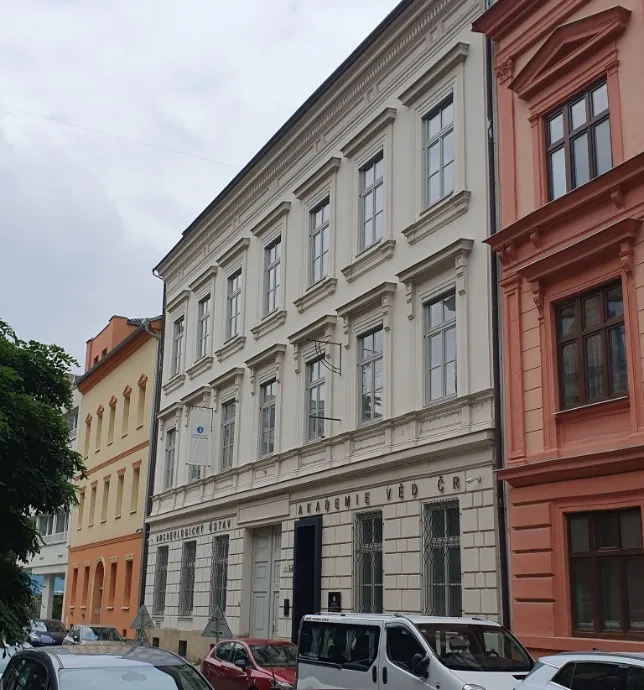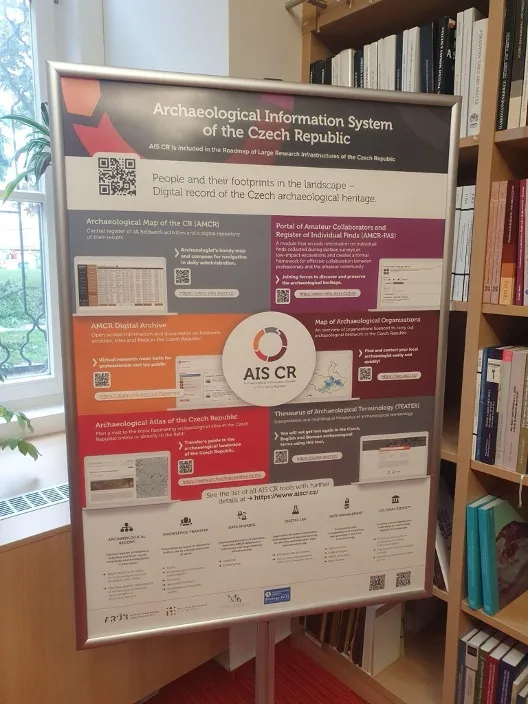
Computational Archaeology Summer School in Brno, Czech Republic
I’ve just returned from a visit to Brno, the second largest city in the Czech Republic, to attend a Computational Archaeology Summer School hosted by the Archaeological Information System of the Czech Republic (AIS CR) research infrastructure at the Institute of Archaeology, Czech Academy of Sciences, Brno.
This five day training school brought together experts in coding skills, the R programming language, the archaeological data integrated into the ARIADNE research infrastructure, and spatial data analysis.
ATRIUM Transnational Access Scheme
Being able to attend this excellent training school was down to to a new scheme by the EU funded ATRIUM project - Advancing fronTier Research In the arts and hUManities - whose goal is to to bridge leading research infrastructures in arts and humanities, archaeology, languages, and open scholarly communication in the social sciences and humanities. The Transnational Access Scheme (or TNA) allows researchers from across Europe to apply for training visits to host organisations from across the project to support their own research. This scheme provides fully funded placements to visit different host organisations from ATRIUM to access expert knowledge and advice from leading Arts and Humanities organisations from across Europe. The ADS is involved in the ATRIUM project in a number of ways, but as the Training and Communications Manager my role is to administer the TNA scheme on behalf of the entire project. The first call for applicants went live back in March and we have almost completed processing the more than 100 applications that we received for both Training Schools and Individual Access. Of this group more than 50 were successful in gaining a place (so far) and a new round of applications goes live in October (so keep an eye on the ATRIUM website for more information). Here at the ADS, we are currently ramping up to deliver our own Training School in November on Data Management and Digital Preservation for Arts and Humanities Researchers. After being lucky enough myself to get a place to attend the AISR ARUB Training School, it’s clear that we have a lot to live up to! Now back to Brno and what we did while we were there!

The Training School
We arrived in Brno the day before the Training School started to settle in and escape the torrential rain and hurricane wind in Vienna! Despite an unprecedented amount of rain and flooding in central Europe, all of the participants were able to safely ahead of our training.
Day 1
We started with an introduction by Petr Pajdla, our course coordinator, who introduced us to the team brought together for the training school and the other training school participants who came from organisations and countries across Europe including France, Germany, Ireland, Ukraine, Italy and many others. Next we jumped right into an Introduction to R, getting familiar with the R Studio software and the basic functionality of R, followed by data analysis of archaeological data and visualisation of the final results! Just after lunch we had a tour of the institute, specifically the Archaeological Information System of the Czech Republic (AIS CR) library and offices. The AIS CR infrastructure is designed to pull together all of the digital resources available in Czech archaeology, including a digital archive, atlas, catalogue of organisations and much more. It was amazing to see the impressive work that they do!

After eight hours of coding(!), it was great to attend the Welcome party in the ARUB common room, which featured local food and a keg of local Pivo. Just when we thought our learning was done for the day, our hosts provided some extra instruction in how to pour an adequate beer with the requisite head, as is customary in the Czech Republic! The rain hadn’t quite subsided yet, so we couldn’t head out onto their excellent sun deck yet (but we did take advantage later in the week)!
Day 2
On the second day we were introduced to the ARIADNE portal, a cross searchable aggregating database that draws together archaeological data from organisations across Europe into one easy to use platform. This is all made possible by Linked Open Data and the AO-Cat ontology, a thesaurus of sorts for describing all of the resources managed by the ArIadne Research Infrastructure. In the afternoon we explored Ariadne’s SPARQL endpoint, a query language that is used to access this data programmatically and then we utilised R to access and search this data in a reproducible way.
Day 3
The third day took us back to R, where we explored the world of spatial analysis. Working through some prepared scripts we were able to explore the sf and terra packages to import, analyse and manipulate both raster and vector data for a series of archaeological sites in Jordan. We were led through a series of spatial statistics and produced a series of charts and map building on our teaching from the first day. Following an extensive day of learning and coding we were able to relax with a Pivo and listen to the Keynote lecture in the evening by Michael Kempf and Margaux Depaermentier on ‘Assessing cultural vs. environmental diversity in the Neolithic Carpathian Basin using multiproxy models’. This fascinating case study explored a real world application of many of the skills we were learning in the training school and provided an introduction to the advanced spatial analysis we would be learning the next day. More local food and Pivo followed the talk!
Day 4
The penultimate day saw us extend our spatial analysis skills and more into some more advanced techniques including point pattern analysis. By creating our own models of archaeological data that explore clusters and their mathematical properties we were able to understand whether the grouping of sites were statistically relevant or just random. Working through the script with help from our tutors, we were able successfully explore the distribution of sites in Jordan and understand whether their location was related to other factors such as elevation and slope. Alos by now the sun had returned to Brno and we enjoyed our breaks on the excellent sun deck (we need one of these in York)!

Day 5
Our last day allowed us to put some of the excellent skills that we had gathered across the week into practice. While one group started work on their own projects, I headed out with a separate group to learn more about the ARADNE SPARQL interface and how we could utilise it to search, analyse and visual archaeological data from across Europe. This will definitely come in handy for some of our own future plans of the ADS (outlined below). By lunchtime we said goodbye to our excellent tutors at ARUB and our fellow participants. The week flew by and it was great to meet and learn so many different researchers from all across Europe. This was my first time to the Czech Republic, but it certainly won’t be my last! A beautiful country with awesome people, fantastic heritage and architecture and amazing scenery! Highlights for us in Brno were Špilberk Castle, with beautiful views overlooking the city, and a quick trip to Villa Tugendhat on the last day, a UNESCO World Heritage site showcasing a prototype of modern architecture by the German architects Ludwig Mies van der Rohe and Lilly Reich. Our hosts also took us to some fantastic locations for food and Pivo! Five days in Brno really wasn’t enough time to properly experience this fantastic city and people and we’re already planning another trip in the near future!

How does this assist my work at the ADS?
The training was particularly useful for our future plans at the ADS. As reported back in January of this year we are currently developing a new ArchSearch platform. ArchSearch is a cross-searchable database of metadata records about UK archaeology and heritage including the collections we host at the ADS. Originally launched back in 1988(!), the latest version was deployed in 2011 and is in need of an update. This new iteration of Archsearch will reuse the infrastructure of the Ariadne Portal and utilise (for the first time in ADS history) a triplestore for storage. Moreover, the new front-end of the database will provide a modern and comprehensive interface to cross-search both ADS records and national heritage records. Similar to the work undertaken by ADS for the Unpath’d Waters portal, we aim to create a bespoke interface based on this existing portal but suited to our data and designed to suit our users. In parallel to the launch of this new platform we hope to be able to deliver training sessions and materials for our users to better utilise this new ArchSearch. This may include training in how to programmatically access this metadata of heritage records from across the UK via a SPARQL endpoint for their own research. Keep an eye on the ADS blog for future updates on the progress of ArcSearch and our future plans for training resources!